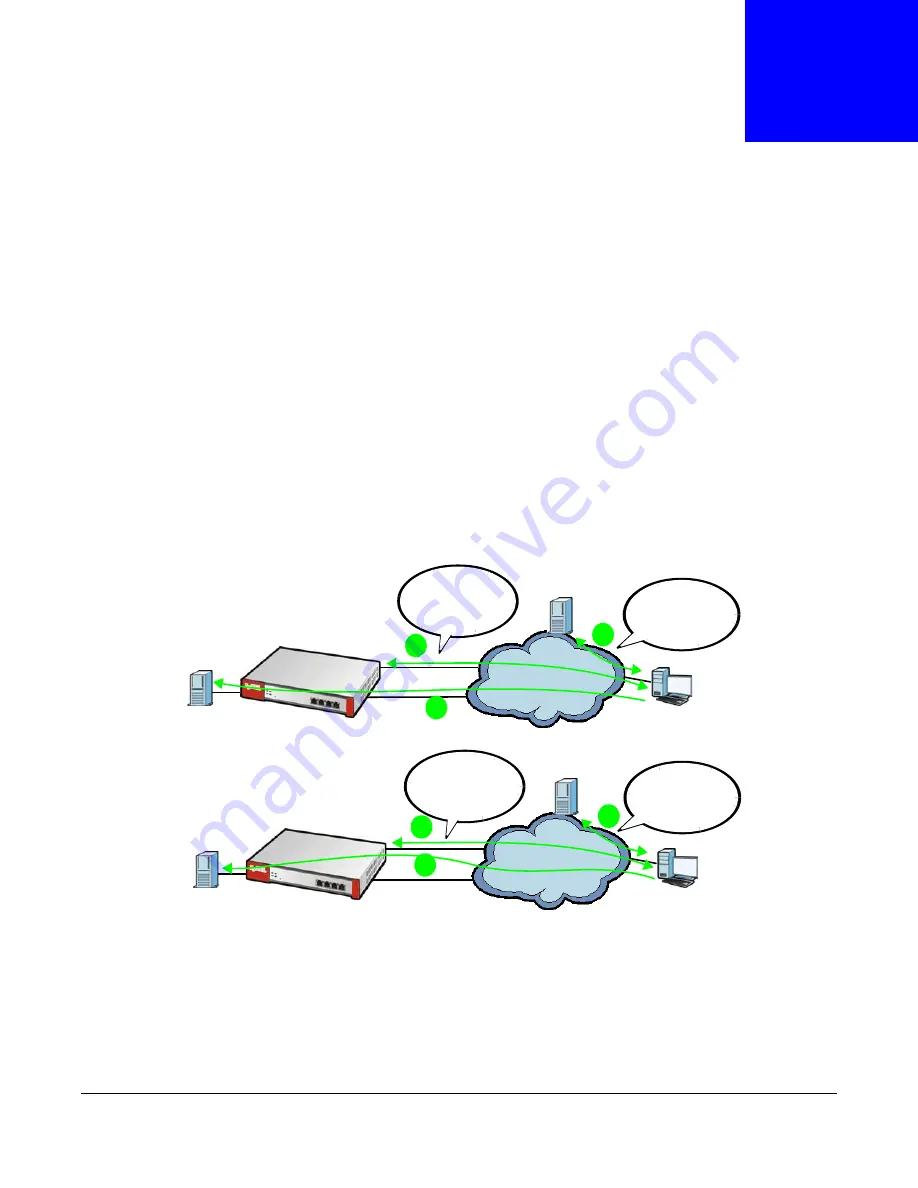
USG20(W)-VPN Series User’s Guide
292
C
H A P T E R
1 8
Inbound Load Balancing
18.1 Inbound Load Balancing Overview
Inbound load balancing enables the USG to respond to a DNS query message
with a different IP
address for DNS name resolution. The USG checks which member interface has the least load and
responds to the DNS query message with the interface’s IP address.
In the following figure, an Internet host (
A
) sends a DNS query message to the DNS server (
D
) in
order to resolve a domain name of www.example.com. DNS server
D
redirects it to the USG (
Z
)’s
WAN1 with an IP address of 1.1.1.1. The USG receives the DNS query message and responds to it
with the WAN2’s IP address, 2.2.2.2, because the WAN2 has the least load at that moment.
Another Internet host (
B
) also sends a DNS query message to ask where www.example.com is. The
USG responds to it with the WAN1’s IP address, 1.1.1.1, since WAN1 has the least load this time.
Figure 200
DNS Load Balancing Example
18.1.1 What You Can Do in this Chapter
• Use the
Inbound LB
screen (see
) to view a list of the configured DNS
load balancing rules.
• Use the
Inbound LB Add/Edit
screen (see
) to add or edit a DNS
load balancing rule.
Internet
Where is
www.example.com?
Ask 1.1.1.1.
A:
D:
A
D
1.1.1.1
2.2.2.2
W
Z
Where is
www.example.com?
It’s 2.2.2.2.
A:
Z:
1
2
3
Internet
B
D
1.1.1.1
2.2.2.2
W
Z
1
2
3
Where is
www.example.com?
Ask 1.1.1.1.
B:
D:
Where is
www.example.com?
It’s 1.1.1.1
B:
Z:
Summary of Contents for ZyWall USG20-VPN
Page 17: ...17 PART I User s Guide ...
Page 18: ...18 ...
Page 99: ...99 PART II Technical Reference ...
Page 100: ...100 ...











































